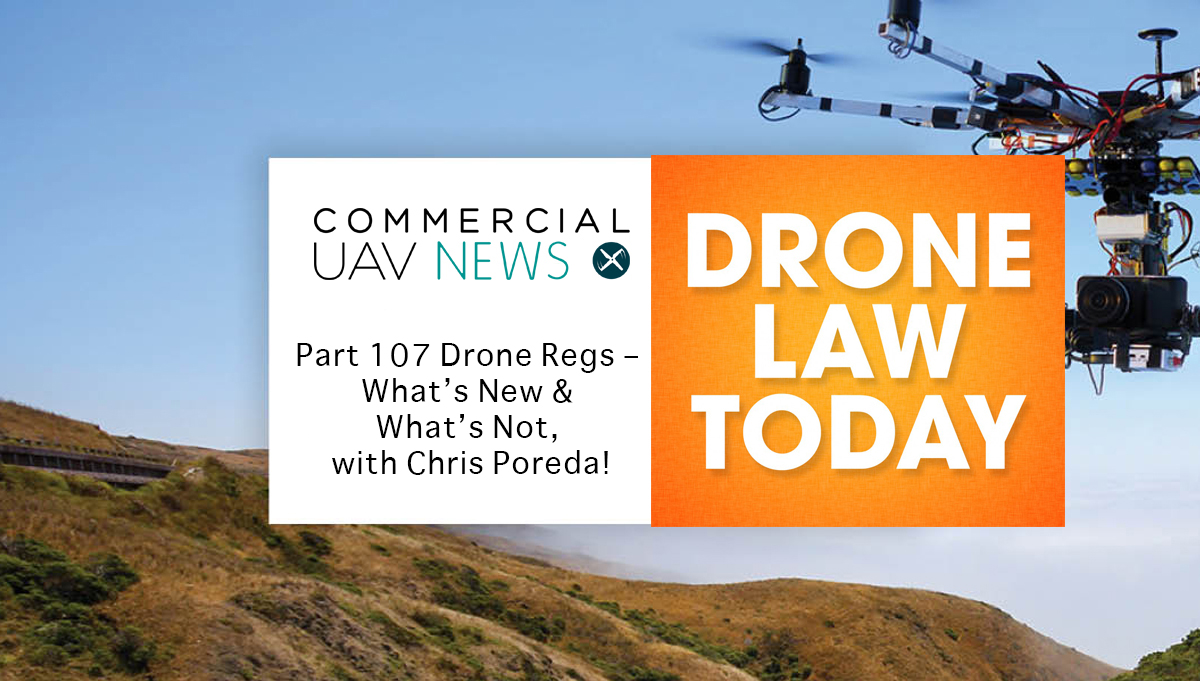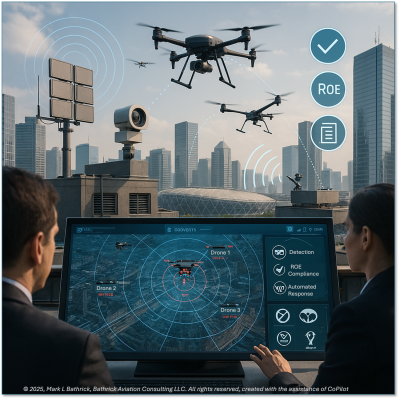Part 107 has redefined what it means to operate a drone for commercial purposes. We’ve explored what many of those changes look like for operators of all types and sizes, but doing so specifically from a legal perspective is what host Steve Hogan did during the Part 107 Drone Regs – What’s New & What’s Not, with Chris Poreda! episode of his Drone Law Today podcast series.
Chris Poreda most recently served as the Regional Counsel for the FAA’s New England Region, as and such has insight and experience around what people need to know about how things have changed. During the episode the two of them talked through many of the ramifications and details associated with Part 107. I caught up with Steve to ask him a few more questions about some of the topics they discussed, including Part 101 and the future of Section 333 Exemptions.Find out what he has to say about all of that and more via the interview below before or after you listen to the episode in iTunes or Stitcher or even your browser. Jeremiah Karpowicz: I often find myself thinking of drone operators as being recreational or commercial, but as you discussed, the distinction really should be between hobby and non-hobby. How have you seen that “recreation vs commercial” definition cause problems?Steve Hogan: The semantic difference is important to keep in mind, but it’s a relatively minor issue in the grand scheme of things. We’ve talked before on the podcast about Government Use of Drones and the specific procedures applicable to them – those are not commercial uses, but they certainly aren’t hobbyist use cases.Ultimately, the segregation of commercial usage into Part 107 gives the industry clarity on how to make this economic sector grow. That’s incredibly important to me and my clients, and is an all-around win. How important is it that Part 101 is now cemented into regulation? It puts hobbyists on notice that they are on the FAA’s radar, officially, now. The FAA essentially ignored hobbyists for decades, going back to the original AC 91-57 in the 1980s. The podcast we did on all of that is now like a historical set piece – a time capsule from a time long ago, aka, barely a year ago. Welcome to the breakneck pace of change in the drone law world. You touched on what the present of 333’s look like for anyone with the Exemption, but what does the future hold for 333 Exemptions themselves? Great question! Remember that Part 107 only applies to sUAS platforms. An sUAS is defined as any UAS (drone) where the airframe weighs 55 pounds or less, fully loaded. Anything heavier than that is not governed by Part 107. The regs applicable to the bigger platforms – the “big heavies” as I called them in my book – will not be complete for another several years, in all likelihood. Section 333 could provide a way to approve UAS flights for non-sUAS platforms. The section by its terms is not limited to sUAS, so there’s no roadblock (that I can see) to handling them that way. We’ll see what the FAA does. How creative do you think commercial operators can get when it comes to being granted a waiver? INFINITELY! The potential for the drone industry is only limited by entrepreneurial imagination, so it’s functionally infinite. That means waiver possibilities are …. (wait for it…) INFINITE!I can’t wait to see what my clients come up with. It’s going to be fun! It was really interesting to hear that some local air traffic controllers had no real sense of how they could or should grant permission to operators. Is that an indication that the FAA might actually be moving too fast? If that’s the case, those guys really can’t win, can they? Ha! No, it’s just hard. The FAA is a huge organization. Though Chris and I didn’t get into it during our talk, the FAA has some guidance for Air Traffic Controllers that will go into effect in October that should clear things up. Check it out here: https://www.faa.gov/regulations_policies/orders_notices/index.cfm/go/document.information/documentID/1029839Subscribe
The information you submit will be stored and used to communicate with you about your interest in Commercial UAV News. To understand more about how we use and store information, please refer to our privacy policy.
September 16, 2016
Exploring How Part 107 Has Changed Drone Law and the FAA’s Approach to Regulation
















Comments